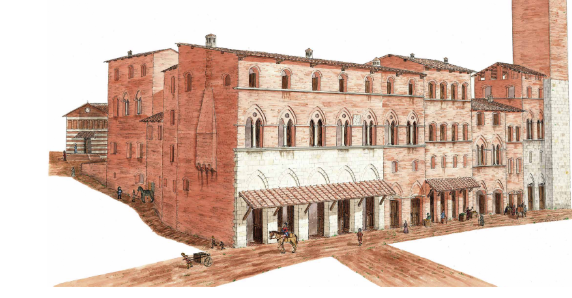The University of Siena, with its long and glorious academic history, has always been a beacon of knowledge and innovation in the Italian cultural landscape. Founded in distant eras, during a time when knowledge and philosophy were cornerstones of society, it has withstood the test of time, maintaining its prestige and commitment to excellence. Since its early days, the University of Siena has attracted the brightest minds and most promising talents, contributing significantly to the social, cultural, and scientific development of the city itself, as well as the entire Italian nation.
The institution has gone through periods of great splendor and moments of challenges and crises, always adapting to societal changes and the evolving needs of research and higher education. Its presence has deeply shaped the social fabric of Siena, enriching it with the wisdom and knowledge that only a center of academic excellence can offer. It is in this context of academic and cultural significance that the Rectorate Palace, formerly the convent of San Vigilio, stands as the very hub of academic activity and collective intellect that animates the University of Siena.
The Rectorate Palace of the University of Siena (formerly the convent of San Vigilio), located on Via Banchi di Sotto, represents the heart of the glorious and age-old Sienese university. It officially became the university’s headquarters in 1815 when, at the end of the Napoleonic era and the restoration of Ferdinand III of Habsburg-Lorraine to the throne of the Grand Duchy of Tuscany, the university resumed its regular academic activities.

At that time, the building, already the seat of various religious orders, required significant renovation work, and the Sienese architect Agostino Fantastici was the main protagonist. Fantastici was tasked with building the so-called Historical Great Hall located on the first floor of the palace.
Further modifications to the building were made at the end of the 19th century by Giuseppe Partini, who had already carried out restorations in the Duomo, the basilica of San Francesco, and Piazza del Campo, and had become a reference point for anyone wishing to intervene in Sienese historical buildings.
The last significant transformations of the palace date back to the fascist era when, at the behest of Rector Gianni Petragnani, the engineer Guido Bonci Casuccini designed modifications to the existing spaces and the construction of a new grand hall. For the artistic part, Bonci Casuccini turned to the creativity of the eclectic Arturo Viligiardi, a pupil of Giovanni Duprè, a protagonist of the Sienese artistic world in the early 20th century.
Among other things, in the pseudo-Renaissance courtyard by Partini, there are sculptural works by Goro di Gregorio, Pietro Tenerani, and Giuseppe Romolo Molteni. The monument in the center of the courtyard, visible from Via Banchi di Sotto, is a 1893 work dedicated to the fallen of Curtatone and Montanara, sculpted by Raffaello Romanelli.
In this regard, if you want to explore the Rectorate Palace of Siena, start from the Minerva Hotel in the center of Siena.